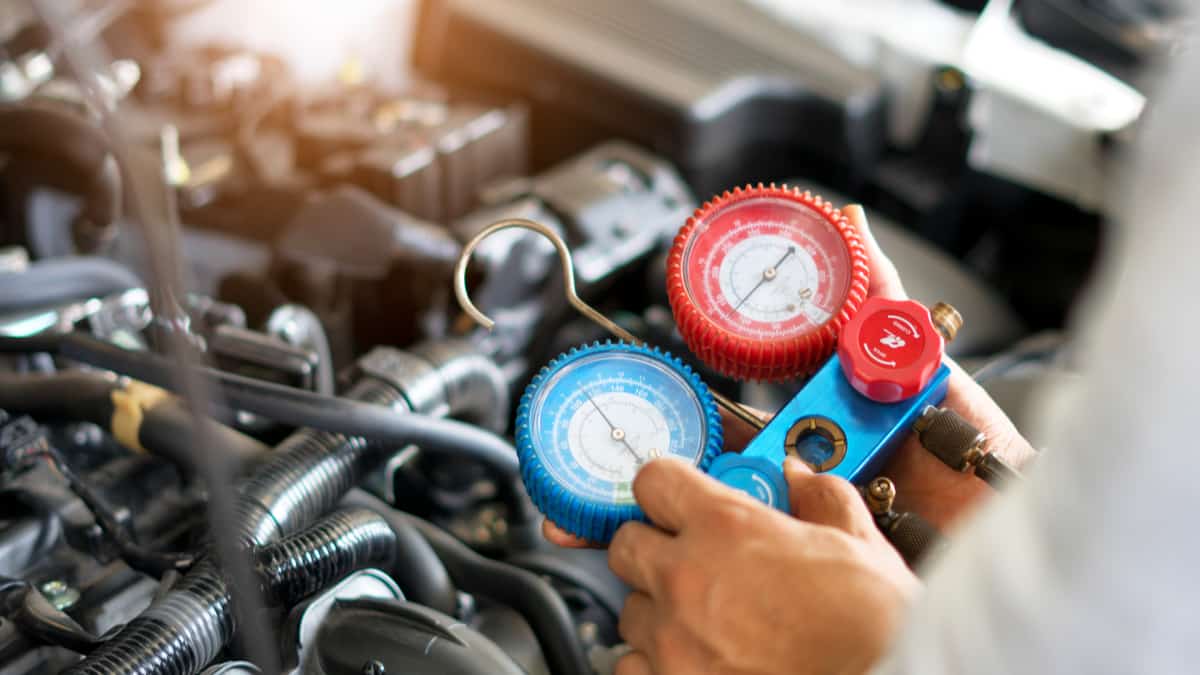Imagine your car’s air conditioning system as a finely tuned orchestra. Each component plays its part, harmonizing to create a refreshing breeze on a sweltering summer day. However, when there’s disharmony within this symphony—specifically, when the low side pressure is normal while the high side pressure is low—it can feel like a musician has skipped a beat, disrupting the overall performance. Understanding this puzzling phenomenon requires delving into the intricate mechanics of automotive air conditioning systems and recognizing the signs of potential trouble.
Understanding the Basics of AC Pressure
To grasp the nuance of the low and high side pressures, we first need to spotlight the fundamental roles these systems play. In an automotive air conditioning (AC) system, the refrigerant cycles through two primary sections: the low side and the high side. The low side is where the refrigerant absorbs heat from the cabin, and the high side is where it releases that heat outside. A delicate balance is essential for peak performance, akin to a seesaw maintaining equilibrium. When either side of this seesaw tips too far in one direction, a range of complications can arise.
The Dance of Pressures
Normal low side pressure indicates that the evaporator is functioning effectively, allowing heat to be absorbed and transformed into a cool breeze. But when the high side pressure dips, it disrupts this cool exchange, leaving you with lukewarm air blowing through the vents. Think of the refrigerant as the diligent messenger, carrying heat away from the cabin. When it encounters resistance on the high side, it struggles to perform its role, much like a messenger unable to deliver vital news due to obstacles in their path.
Causes Behind the Discrepancy
Several culprits can orchestrate this discord within your AC system. Here are some of the most common causes:
- Insufficient Refrigerant: One of the primary suspects is a refrigerant leak or undercharging. Picture a balloon that has lost its air; it can no longer maintain its shape or function. When refrigerant levels dip, the pressure within the system alters, often resulting in a low high side pressure reading while the low side remains normal.
- Condenser Issues: The condenser is akin to the cooling tower of a power plant, dissipating heat gathered by the refrigerant. If the condenser gets clogged or damaged, it struggles to release heat efficiently. This inefficiency can give rise to high side pressure issues, leading to a discrepancy in readings.
- Blockages or Restrictions: Just as a roadblock hinders traffic flow, obstructions in the AC system—whether from debris, a faulty expansion valve, or a clogged receiver drier—can create pressure imbalances, resulting in a low high side pressure. These blockages create bottlenecks, dampening the refrigerant’s capability to facilitate temperature control.
- Faulty Components: Individual components such as compressors or expansion valves might also be to blame. Much like a single instrument falling out of tune can impact an entire orchestra, a failing component can wreak havoc on the system’s operational harmony.
Diagnosing the Dilemma
Understanding the root cause of this AC pressure peculiarities often requires a multi-faceted approach. A visual inspection is a great starting point. Mechanics routinely check for leaks, wear and tear, or any signs of physical damage. However, using diagnostic tools—such as manifold gauge sets—provides more precise data. This step can shed light on whether the system is correctly charged and functioning as intended. By measuring the pressures on both sides, mechanics can paint a clearer picture of what’s happening.
Resolving the Issue
Once the diagnosis is made, the resolution process can commence. If refrigerant levels are inadequate, a technician will identify and repair any leaks before recharging the system. Cleaning the condenser or replacing a faulty component can often rectify performance issues. The process requires attention to detail and expertise, ensuring that each instrument resonates properly within the AC system’s intricate orchestration.
Preservation Practices: Avoiding Future Discord
Maintaining your AC system is akin to regular practice for musicians; it keeps everything running smoothly. Regular checks and maintenance can help ensure that your air conditioning system remains in peak condition. This includes checking for leaks, monitoring refrigerant levels, and verifying that all components are functioning efficiently. By taking proactive steps, one can avoid the frustrating situation of an imbalanced AC system down the line.
Conclusion
The AC pressure puzzle—where the low side is normal and the high side is low—can be a source of confusion and discomfort. Yet, by employing an inquisitive mindset and overcoming potential obstacles within the system, it’s possible to restore harmony. In doing so, you not only enhance your driving comfort but also protect the longevity of your vehicle’s air conditioning system. Keep the air cool and the melodies flowing, and your car’s AC can continue to be the refreshing oasis it was designed to be.
